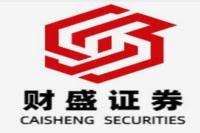China's Economic Pulse: A Deep Dive into Recent Macroeconomic Trends and Corporate Developments (Meta Description: China economy, macroeconomic trends, AI, new industrialization, renewable energy, stock market, corporate news, policy updates)
Dive into the heart of China's dynamic economic landscape! This isn't your average news recap. We're peeling back the layers, offering expert analysis, and sharing insider perspectives on the latest developments. From the government's ambitious plans to boost consumption through "trade-in" programs and its massive investments in renewable energy and AI, to the bustling activity in the stock market and the intriguing shifts in corporate strategies, we're dissecting it all. Prepare to be captivated by the intricate dance of policy, innovation, and market forces shaping China's economic future. Get ready for a detailed, insightful journey, complete with compelling narratives, data-driven analysis, and expert commentary that will leave you informed and empowered. Forget dry statistics; we're weaving a story of ambition, resilience, and the relentless pursuit of progress in one of the world's most influential economies. We'll explore the strategic moves of major players, the implications of recent policy announcements, and the underlying trends that will define the coming year. This isn't just a report; it's a window into the beating heart of China's economic engine. Buckle up, it's going to be a wild ride! Prepare to gain a crucial understanding of the forces shaping not only China's future but the global economic outlook.
Government Initiatives: Driving Growth and Innovation
China's government is pulling out all the stops to keep the economic engine humming along. Recent announcements reveal a multi-pronged approach focusing on stimulating consumption, accelerating renewable energy adoption, and fostering AI-driven manufacturing. It’s a bold strategy, and frankly, pretty exciting to watch unfold.
The Ministry of Commerce (MOFCOM) is spearheading a renewed push for consumer spending through its "large-scale equipment upgrades and consumer product trade-in" initiative (aka "two new" policy). Think of it as a supercharged trade-in program, but on a national scale! Initial results are already impressive, with millions of vehicles, appliances, and even e-bikes traded in. This initiative isn't just about clearing out old stock; it's a smart way to boost demand and stimulate economic activity. The impact is evident – November's automotive retail sales saw a significant jump, contributing positively to overall retail growth. This shows the power of targeted government intervention, folks!
Meanwhile, the National Energy Administration (NEA) reported a staggering 14.4% year-on-year growth in power generation capacity through November. This isn't just about keeping the lights on; it reflects China's commitment to renewable energy. Solar and wind power witnessed particularly explosive growth, highlighting the country's rapid transition towards a cleaner energy future. However, the slightly decreased average utilization hours of power generation equipment suggest potential adjustments needed in grid management and energy distribution strategies. This is a crucial area for ongoing optimization.
The Ministry of Industry and Information Technology (MIIT) is leading the charge on smart manufacturing, pushing for the integration of advanced technologies like AI, industrial software, and intelligent equipment. Their "AI+ Manufacturing" initiative aims to create a new generation of smart factories, bolstering the competitiveness of Chinese manufacturers on the global stage. This isn't just about automation; it's a strategic move to establish China's tech prowess in the global manufacturing landscape. The MIIT's focus on standardization and international cooperation is equally crucial for long-term sustainability.
The Rise of Renewable Energy in China
China's relentless pursuit of renewable energy is nothing short of spectacular. The NEA's data paints a clear picture: Solar power capacity surged by a remarkable 46.7%, while wind power saw a robust 19.2% increase. This aggressive expansion isn't just environmentally responsible; it's a strategic move to secure energy independence and reduce reliance on fossil fuels. The sheer scale of investment in renewable energy infrastructure is breathtaking and demonstrates the country’s long-term vision.
However, challenges remain. The decrease in average power generation equipment utilization hours suggests the need for further grid modernization and efficient energy dispatch systems. This is a key area that requires focused attention to optimize the efficiency of this massive renewable energy expansion. Integrating such a large influx of renewable energy sources into the existing grid requires careful planning and significant investment in smart grid technologies. The success of China's renewable energy transition will depend on addressing these challenges effectively. It’s a testament to their ambition, though – wow!
Artificial Intelligence (AI) and New Industrialization: A Perfect Storm?
The synergy between AI and new industrialization is a game-changer, and China is at the forefront. The MIIT's "AI+ Manufacturing" initiative is more than a buzzword; it represents a fundamental shift towards a smarter, more efficient industrial base. By promoting the integration of AI technologies across the manufacturing value chain, China aims to leapfrog traditional industrial models and establish itself as a global leader in advanced manufacturing.
This isn't just about replacing human workers with robots; it's about creating a more intelligent and adaptive industrial ecosystem. AI can optimize production processes, improve quality control, and enable the development of entirely new products and services. This requires significant investment in R&D, talent cultivation, and the development of robust supporting infrastructure. We are witnessing a technological revolution with potentially profound implications for global supply chains and manufacturing competitiveness. This isn't a trend; it's a transformation.
Stock Market Dynamics: A Rollercoaster Ride
The Chinese stock market is a complex beast, characterized by its volatility and dynamic shifts. While the Shanghai Composite Index experienced a slight dip, the overall market demonstrated remarkable resilience. The significant increase in trading volume suggests considerable investor activity and confidence, despite the short-term fluctuations. This is a market that's constantly evolving, adapting to both domestic and global pressures.
The dominance of AI-related stocks highlights the market's enthusiasm for this promising sector. However, the rapid rotation of hot sectors underscores the necessity for careful portfolio diversification and astute risk management. It’s a reminder that investing in the Chinese market demands a keen understanding of both short-term and long-term trends. The market is a reflection of the nation’s broader economic pulse, offering insights into investor sentiment and market expectations.
Corporate Landscape: Restructuring and Strategic Partnerships
The corporate world is far from static, with significant restructuring and strategic partnerships shaping the competitive landscape. The large-scale personnel changes at FAW Group signify a strategic shift within the automotive industry. Similarly, the strategic alliance between Honor and Tencent signals a growing trend of collaboration within the tech sector. These developments underscore the dynamism of the Chinese business environment, where companies are constantly adapting to market forces and seeking to gain a competitive edge. This dynamic environment promotes innovation and efficiency.
Frequently Asked Questions (FAQs)
Q1: What is the significance of the "two new" policy?
A1: The "two new" policy, focusing on large-scale equipment upgrades and consumer product trade-ins, is a crucial government initiative aimed at stimulating consumption and boosting economic growth. Early results suggest it is already having a positive impact on various sectors.
Q2: How is China addressing the challenges of integrating renewable energy sources into its power grid?
A2: While China is making significant strides in renewable energy, challenges remain in grid modernization and efficient energy distribution. Further investment in smart grid technologies and effective grid management strategies are crucial for optimizing the utilization of renewable energy sources.
Q3: What are the implications of the MIIT's "AI+ Manufacturing" initiative?
A3: This initiative signifies a fundamental shift towards a smarter, more efficient industrial base. It aims to transform Chinese manufacturing through the integration of AI technologies, boosting competitiveness and enabling the development of innovative products and services.
Q4: What factors are driving the volatility in the Chinese stock market?
A4: The Chinese stock market is influenced by a multitude of factors, including global economic conditions, domestic policy shifts, and investor sentiment. The rapid rotation of hot sectors underscores the need for careful risk management and portfolio diversification.
Q5: How are corporate strategies evolving in China?
A5: We are witnessing a dynamic corporate landscape with significant restructuring, strategic alliances, and a focus on technological innovation. Companies are adapting to changing market forces and seeking to gain a competitive edge through collaboration and technological advancements.
Q6: What is the outlook for the Chinese economy in the coming year?
A6: The outlook is complex and multifaceted. While the government's initiatives aim to stimulate growth, challenges remain in balancing economic development with environmental sustainability and managing the complexities of a rapidly changing global landscape. However, China's resilience and long-term vision suggest a continued period of significant economic activity.
Conclusion
China's economic landscape is a fascinating tapestry woven with threads of government policy, technological innovation, and corporate dynamism. The initiatives discussed here – from the ambitious "two new" policy to the rapid expansion of renewable energy and the embrace of AI in manufacturing – paint a picture of a nation committed to sustained economic growth and technological leadership. While challenges undoubtedly exist, China's remarkable progress and unwavering resolve demonstrate its unwavering commitment to a bright economic future. The journey is far from over, but the direction is clear – a future driven by innovation, sustainability, and a relentless pursuit of progress.



